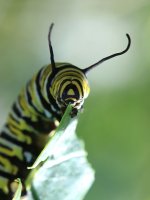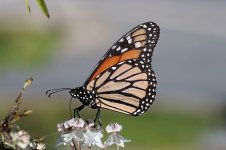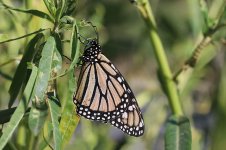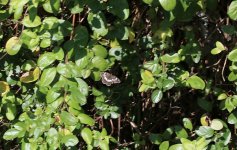
11 January. Coromandel.
Lazy day, pottering down to the beach, even engaging in a spot of kayaking. Birding very much on the backburner, but did put in some effort for butterflies ….and for my effort, notched up a 'massive' six species, thereby actually becoming the highest day total for butterflies!
As for the species, quite a few Monarchs (and dozens of caterpillars) around Milkweed outside a cafe, many Rauparaha’s Coppers in dunes behind the beach, one small colony of Common Bush Blues, a single Long-tailed Blue, Small Whites here and there and, rounding the day off, one Coastal Copper in the garden of our chalet. Had I done my research better, I might also have found Forest Ringlet - but as it was, I discovered that the site that I knew was actually private property with massive great gate preventing access! Ah well, did enjoy the massive Kauri trees nearby and impressive giant tree ferns!
Special mention also to dwellers of an old mine shaft - in nooks and crannies, two dozen or more Cave Weta, long legs and antennas galore.
Lazy day, pottering down to the beach, even engaging in a spot of kayaking. Birding very much on the backburner, but did put in some effort for butterflies ….and for my effort, notched up a 'massive' six species, thereby actually becoming the highest day total for butterflies!
As for the species, quite a few Monarchs (and dozens of caterpillars) around Milkweed outside a cafe, many Rauparaha’s Coppers in dunes behind the beach, one small colony of Common Bush Blues, a single Long-tailed Blue, Small Whites here and there and, rounding the day off, one Coastal Copper in the garden of our chalet. Had I done my research better, I might also have found Forest Ringlet - but as it was, I discovered that the site that I knew was actually private property with massive great gate preventing access! Ah well, did enjoy the massive Kauri trees nearby and impressive giant tree ferns!
Special mention also to dwellers of an old mine shaft - in nooks and crannies, two dozen or more Cave Weta, long legs and antennas galore.









